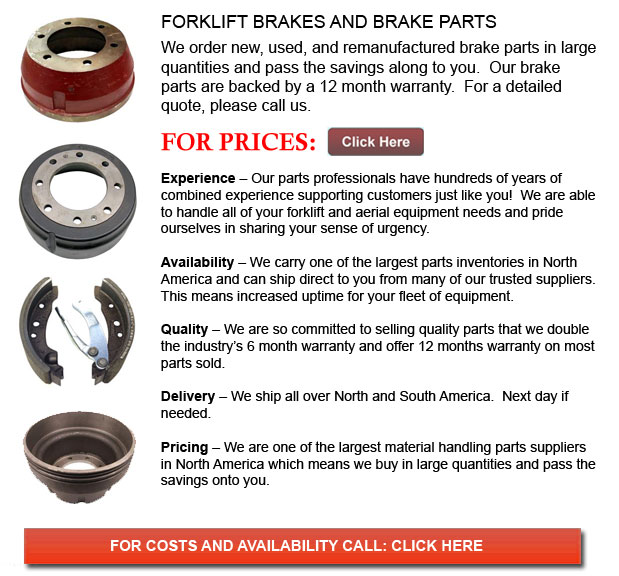
Forklift Brakes - A brake wherein the friction is provided by a set of brake pads or brake shoes that press against a rotating drum shaped unit referred to as a brake drum. There are several specific differences between brake drum kinds. A "brake drum" is usually the definition provided if shoes press on the interior outside of the drum. A "clasp brake" is the term used to be able to describe if shoes press next to the outside of the drum. One more kind of brake, referred to as a "band brake" utilizes a flexible belt or band to wrap around the outside of the drum. If the drum is pinched in between two shoes, it could be called a "pinch brake drum." Like a conventional disc brake, these types of brakes are quite rare.
Early brake drums, prior to the year 1995, needed to be consistently modified so as to compensate for wear of the shoe and drum. "Low pedal" could result if the required adjustments are not carried out satisfactorily. The vehicle can become hazardous and the brakes can become useless whenever low pedal is mixed with brake fade.
There are some different Self-Adjusting systems utilized for braking offered nowadays. They can be classed into two individual categories, the RAI and RAD. RAI systems are built-in systems that help the tool recover from overheating. The most recognized RAI manufacturers are AP, Bendix, Lucas, and Bosch. The most famous RAD systems consist of Ford recovery systems, Volkswagen, VAG, AP and Bendix.
Self adjusting brakes generally make use of a mechanism that engages just if the motor vehicle is being stopped from reverse motion. This stopping method is acceptable for use where all wheels utilize brake drums. Nearly all vehicles now make use of disc brakes on the front wheels. By functioning only in reverse it is less probable that the brakes would be applied while hot and the brake drums are expanded. If tweaked while hot, "dragging brakes" can occur, which raises fuel intake and accelerates wear. A ratchet device that becomes engaged as the hand brake is set is another way the self adjusting brakes may function. This means is only suitable in applications where rear brake drums are used. When the parking or emergency brake actuator lever exceeds a certain amount of travel, the ratchet developments an adjuster screw and the brake shoes move in the direction of the drum.
There is a manual adjustment knob situated at the base of the drum. It is typically adjusted via a hole on the other side of the wheel and this requires going underneath the lift truck utilizing a flathead screwdriver. It is of utmost significance to move the click wheel correctly and modify each and every wheel evenly. If unequal adjustment happens, the vehicle can pull to one side during heavy braking. The most efficient method to ensure this tedious job is completed carefully is to either lift each and every wheel off the ground and spin it by hand while measuring how much force it takes and feeling if the shoes are dragging, or give each one the same amount of clicks manually and then perform a road test.
![]() Click to Download the pdf
Click to Download the pdf
Forklift Parts
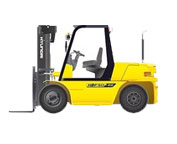
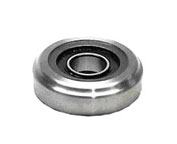
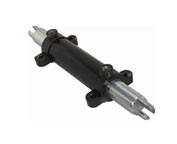
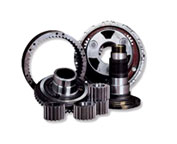
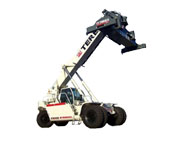
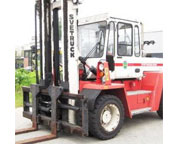
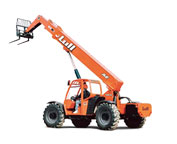
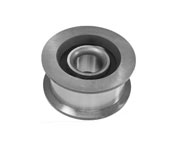
Lift Parts Express
TOLL FREE: 1-888-695-7994
Galveston, Texas
forkliftpartsgalveston.com
Email Us
About Us


